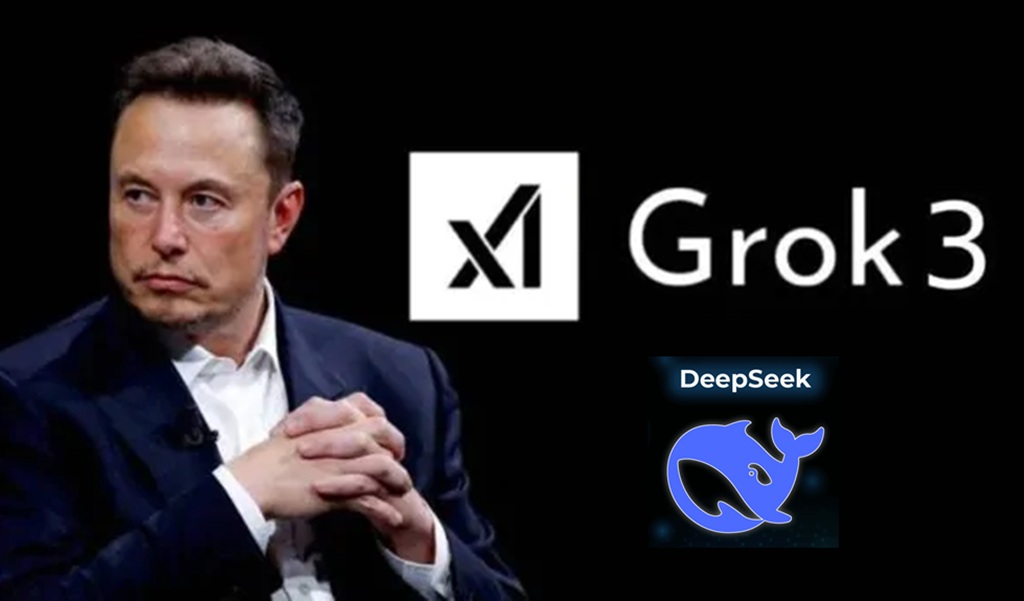On Monday, Elon Musk’s AI company, xAI, introduced its latest model, Grok 3, adding new features to its iOS and web apps. Grok is designed to compete with OpenAI’s GPT-4 and Google’s Gemini, offering image analysis and detailed question-answering capabilities.
Originally scheduled for release in 2024, Grok 3 faced delays during its development.
The model was trained at xAI’s large data centre in Memphis, equipped with 200,000 GPUs. Musk claims Grok 3 used ten times the computing power of its predecessor, Grok 2, and was trained on a broader dataset that included legal documents.
He describes Grok 3 as a highly capable AI focused on uncovering the truth, even when it challenges politically correct perspectives.
Grok 3 is available in various versions. A smaller, faster model called Grok 3 mini prioritizes speed over accuracy. While not all versions have been released, the rollout began on Monday.
According to xAI, Grok 3 outperforms GPT-4o on benchmarks such as AIME, which tests math skills, and GPQA, which measures PhD-level science knowledge. Grok 3 has also performed well in the crowdsourced Chatbot Arena.
The debut of Grok 3
Two specialized versions, Grok 3 Reasoning and Grok 3 mini Reasoning, are designed to improve problem-solving by thoroughly fact-checking responses. These models are recommended for complex tasks like advanced math, science, and coding and reportedly outperform OpenAI’s o3-mini in benchmarks like AIME 2025.
The Grok app will soon add a “voice mode,” enabling synthesized speech. xAI also plans to launch Grok 3 through its enterprise API and DeepSearch feature. Musk intends to release Grok 2 as open-source in the coming months.
At its launch, Musk positioned Grok as an unfiltered AI willing to tackle controversial topics avoided by other models. Grok continues to deliver on this promise, responding to questions that other AIs, like ChatGPT, tend to avoid, even when it requires bold or explicit language.
The debut of Grok 3 has renewed conversations about the global AI race. According to Tian Feng, former dean of SenseTime’s Intelligence Industry Research Institute, Grok 3’s importance lies not in its technical achievements but in the differing strategies of the U.S. and China in AI development.
The U.S. relies on substantial financial backing and high-powered computing to advance AI, while China focuses on cost-efficiency and maximizing current resources, as seen with DeepSeek.
Tian explained in an interview with CGTN that U.S. firms use their vast capital and advanced hardware to innovate without much concern for expenses. This approach, exemplified by Grok 3, prioritizes staying ahead at all costs. The U.S. focuses on innovation by leveraging its financial dominance rather than cutting costs.
Conversely, China emphasizes efficiency, with DeepSeek serving as an example of this strategy. DeepSeek V3’s training expenses are only about a tenth of OpenAI’s GPT-4. Tian predicts that AI computing costs could decrease significantly within a year, promoting wider adoption and making AI more affordable across industries.
The role of open-source in AI’s progress
Tian believes open-source development is key to driving AI forward. While Grok 3 remains proprietary, DeepSeek openly shares its research and allows commercial use without licensing fees. This openness attracts developers worldwide, creating a cycle of collaboration and faster innovation.
Tian argues that China can build a thriving AI ecosystem by fostering a collaborative community through open-source initiatives. This approach could lead to more rapid advancements and broaden AI’s applications.
AI and manufacturing: China’s edge
Tian also highlights the potential of AI in manufacturing. For instance, Tesla’s gigafactories provide Musk with valuable real-world data for AI development. However, Tian points out that China’s manufacturing capabilities are far more extensive, with a scale he estimates to be 100 times greater than that of the U.S.
Integrating AI into manufacturing could transform China’s industrial sector. As Tian puts it, large-scale operations are essential for intelligence. The path to achieving Artificial General Intelligence (AGI) relies on substantial data and widespread use. With its vast industrial base, China could lead the way in AI-powered manufacturing.
Two different roads for AI development
Looking ahead, Tian predicts two key strategies for AI development:
- High-cost, high-performance models – The U.S. will continue investing heavily in advanced AI systems for specialized applications, leveraging its financial resources to maintain an edge.
- Affordable, widely accessible AI – China will focus on cost-effective solutions, maximizing efficiency with existing technology while reducing expenses.
As competition intensifies, DeepSeek has emerged as a benchmark for AI, with both U.S. and Chinese models being compared against it. Tian believes DeepSeek’s cost-efficiency gives it a competitive advantage as the AI landscape evolves.
The future of AI will likely depend on these two strategies—one centred on limitless investment and the other on practicality and resourcefulness. The big question is which approach will stand the test of time.








